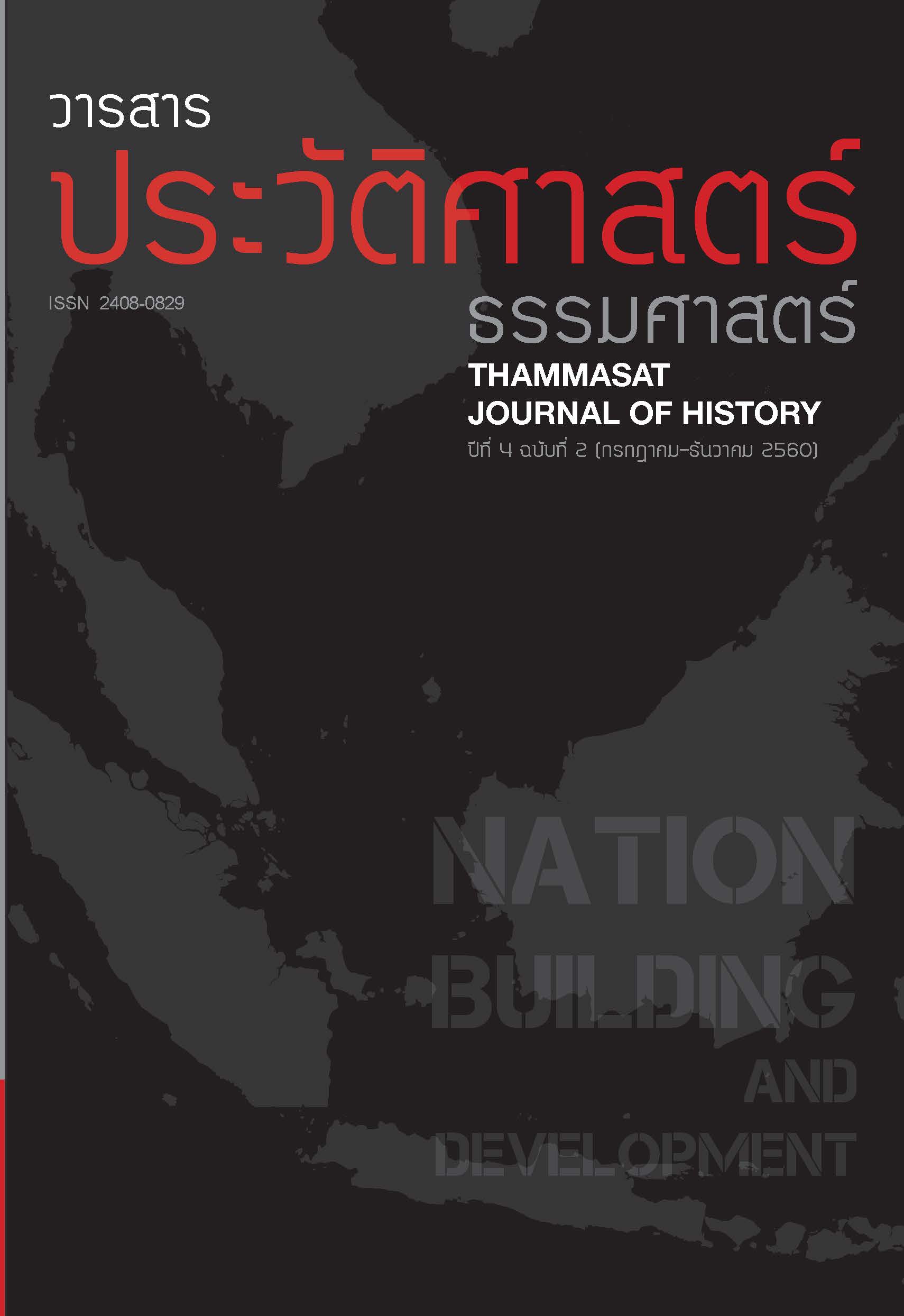“One for All, All for One”: History of Football in Java during the Greater East Asia War (1942-1945)
Main Article Content
Abstract
This article attempt to examine the history of football inJava Island under the regulation of the Japanese Military Administration during the Greater East Asia War (1942-1945). It demonstrates Javanese football’s society and culture in the 1940s, by using the newspapers and magazines of that period as primary sources. Japanese Administration emphasized Football as one of activities for improving physical strength, entertaining, and creating unity. Newspapers and magazines reflected the participation of multi-ethnic athletes and football teams. As well as the influence of 2-3-5 formation — the most popular formation in international football’s tournaments in Javanese football’s culture. Also, issues including fans, stadiums, and sport accessories are discussed.
Article Details
Copyright of any paper published in this journal belongs to the Author and All rights reserved.
The opinions expressed in the journal are those of the authors. Department of History, Philosophy and English Literature’s Journal Committee, Editorial Board and Peer Reviewer do not have to agree with those comments.
References
NIOD. Asia Raya. (23 July 1942-7 September 1945) Jakarta.
_____. Djawa Baroe. (1 January 1943-1 August 1945). Jakarta.
_____. Soeara M.I.A.I.: Madjallah Islam/Madjlis Islam (1 November 1943). Jakarta.
_____. Pandji Poestaka. (25 April 1942-15 March 1945). Jakarta.
_____. Pembangoen. (8 July 1943-31 December 1943). Jakarta.
_____. Soeara Asia. (2 June 1942-13 September 1945). Soerabaja.
_____. Tjahaja. (8 June 1942-5 September 1945). Bandung.
นิพนธ์ กิติกุล. หลักการเล่นฟุตบอลสมัยใหม่. กรุงเทพฯ: พิทักษ์อักษร, 2525.
อู่จี้เยียะ. 60 ปีโพ้นทะเล.กรุงเทพฯ: โพสต์บุ๊กส์, 2553.
Bangun, Hendry Ch. Wajah Bangsa dalam Olahraga: 100 Tahun Berita Olahraga Indonesia. Jakarta: Pustaka Spirit & Intimedia, 2007.
Cho, Younghan. Football in Asia: History, Culture, and Business. Abingdon, OX: Routledge, 2014.
Guttmannand, Allen and Lee Thompson. Japanese Sport: A History. Honolulu: University of Hawaii Press, 2001.
Kahin, George McTurnan. Nationalism and Revolution in Indonesia. Ithaca. New York: Cornell University Press, 1952.
Kratoska, Paul H. Asian Labor in Wartime Japanese Empire. Singapore University Press, 2006.
Lebra, Joyce C. Japanese-Trained Armies in Southeast Asia: Independence and Volunteer Forces in World War II. Singapore: Institute of Southeast Asian Studies, 2010.
Mechikoff, Robert A and Estes, Steven G. A History and Philosophy of Sport and Physical Education: from Ancient Civilizations to the Modern World. Boston: McGraw Hill, 2002.
Pope, S.W. and Nauright, John. Routledge Companion to Sport History. London: Routledge, 2010.
Post, Peter. Frederick, William H. and Sato, Shigeru. The Encyclopedia of Indonesia in the Pacific War: in Cooperation with the Netherlands Institute for War Documentation. Leiden; Boston: Brill, 2010.
Sato, Shigeru. War, Nationalism and Peasants: Java Under the Japanese Occupation 1942-1945. Armonk, New York: M.E. Sharpe, 1994.
Brown, Colin. “Playing the Game: Ethnicity and Politics in Indonesian Badminton.” Indonesia 81 (April 2006): 71-93.
Colombijn, Freek. “The Politics of Indonesian Football.” Archipel 59 (2000): 171-199.
กษิดิศ วงษ์ลิขิตธรรม. “รัฐกับนโยบายส่งเสริมกีฬาในหมู่เกาะอินโดนีเซียระหว่างสงครามมหาเอเชียบูรพาและสงครามต่อสู้เพื่อเอกราช ในช่วง ค.ศ. 1942-1949.” วิทยานิพนธ์ปริญญามหาบัณฑิต, สาขาวิชาประวัติศาสตร์ บัณฑิตวิทยาลัย จุฬาลงกรณ์มหาวิทยาลัย, 2558.
Fédération Internationale de Football Association. DUTCH EAST INDIES. n.d. 2015, October 25 (http://www.fifa.com/worldcup/archive/france1938/teams/team=44031/matches.html; http://www.fifa.com/worldcup/archive/france1938/teams/team=44031/players.html).
Japan Football Association. History of JFA. 2016, August 9 (http://www.jfa.or.jp/eng/history/).
Stokkermans, Karel. Dutch East Indies - Football History. 2012. 2015, November 11 (http://www.rsssf.com/tablesi/indiechamp.html)

